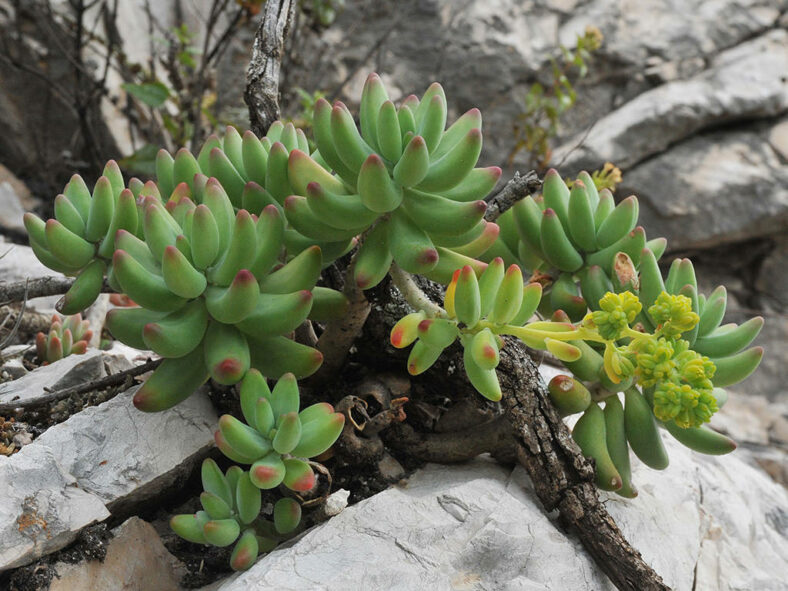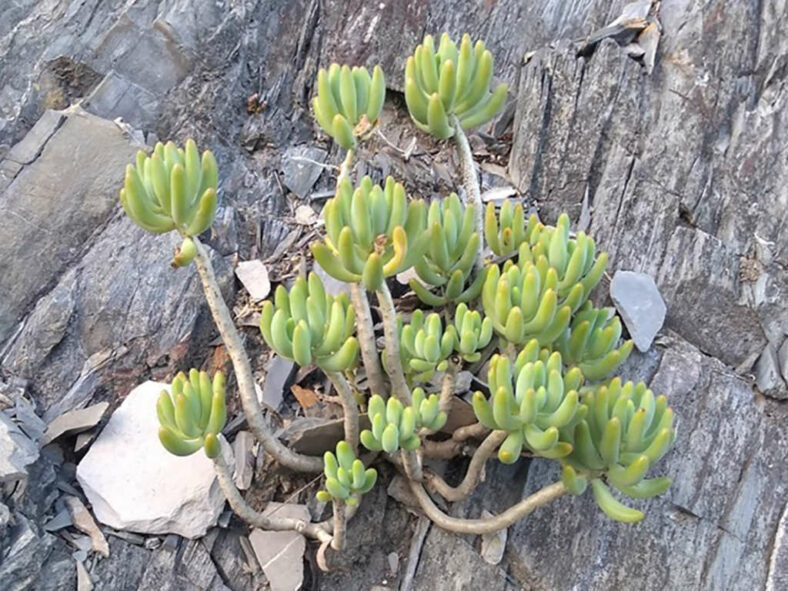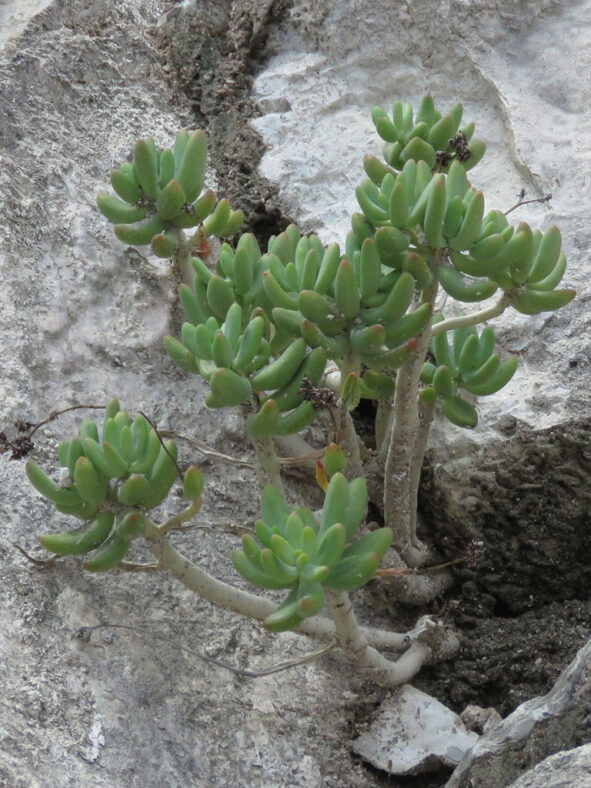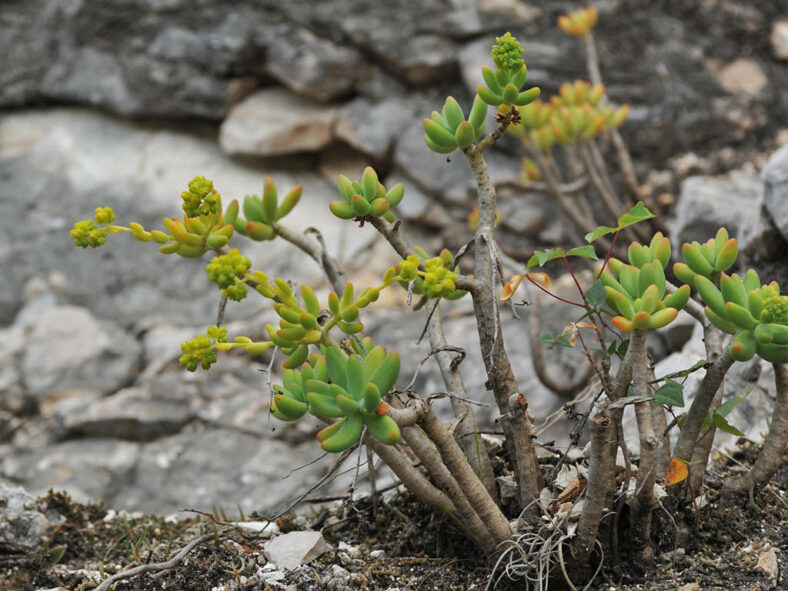In 1905, Joseph Nelson Rose described this plant as Corynephyllum viride. The specific epithet "viride" (pronounced VEER-ih-dee) refers to its green leaves. However, when Ernst Friedrich Berger combined it into Sedum, he had to change the specific name to Sedum viride, which was already being used to describe a plant from Japan. As a result, the name Sedum corynephyllum was chosen.
Scientific Name
Sedum corynephyllum Fröd.
Synonym(s)
Corynephyllum viride
Scientific Classification
Family: Crassulaceae
Subfamily: Sempervivoideae
Tribe: Sedeae
Genus: Sedum
Etymology
The specific epithet "corynephyllum" (pronounced kor-ry-nee-FIL-um) means "club-shaped leaf" and refers to the shape of the leaves of this species.
Origin
Sedum corynephyllum is native to Mexico. It occurs in Veracruz, Hidalgo, Querétaro, Guanajuato, and San Luis Potosi.
Description
Sedum corynephyllum is a succulent subshrub with club-shaped leaves densely clustered at the branch tips. The branches are usually erect or sometimes recumbent and can grow up to 16 inches (40 cm) long. The light green leaves often have reddish tips, measuring up to 2 inches (5 cm) long.
The flowers of Sedum corynephyllum have greenish-yellow petals and very large, unequal sepals. They appear in loose, branching clusters in spring and summer.

How to Grow and Care for Sedum corynephyllum
Light: Sufficient light is most important for growing a healthy plant. Sedum corynephyllum grows best in locations that receive full sun for at least six hours a day but will tolerate some shade. Place the plant near a sunny window or use artificial lights when growing indoors.
Soil: This plant does not tolerate waterlogged soil, so good drainage is essential to prevent root rot. Use a commercially available mix designed for succulents, or create your own.
Temperature: Sedum corynephyllum has a good tolerance to heat and low temperatures. It grows best in USDA Plant Hardiness Zones 10a to 11b, with average minimum winter temperatures ranging from 30°F to 50°F (-1.1°C to 10°C).
Watering: From spring to fall, water thoroughly and let the soil dry out before watering again. During the winter, water the plant just enough to keep it from shriveling. When watering, avoid getting the leaves, stems, and flowers wet.
Fertilizing: Feed a water-soluble fertilizer diluted to half the recommended strength during the growing season. However, feeding is unnecessary if you provide the plant with fresh soil annually.
Repotting: When Sedum corynephyllum outgrows its current pot, repot it into a larger one during the spring. Make sure the soil is dry before you begin repotting.
Propagation: It is easy to propagate Sedum corynephyllum by taking leaf or stem cuttings during the growing season or by sowing seeds in spring or summer.
Learn more at How to Grow and Care for Sedum.
Toxicity of Sedum corynephyllum
Sedum corynephyllum is not listed as toxic to people, but it can be mildly toxic to pets and children.
Forms of Sedum corynephyllum
Links
- Back to genus Sedum
- Succupedia: Browse succulents by Scientific Name, Common Name, Genus, Family, USDA Hardiness Zone, Origin, or cacti by Genus
Photo Gallery
Click on a photo to see a larger version.


